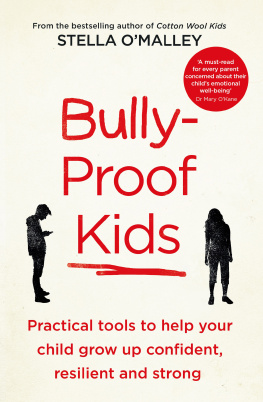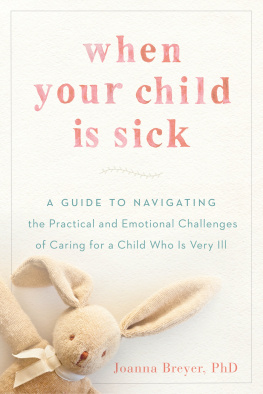The Common-Sense Guide to Improving the Safeguarding of Children
of related interest
Good Practice in Safeguarding Children
Working Effectively in Child Protection
Edited by Liz Hughes and Hilary Owen
Part of the Good Practice in Health, Social Care and Criminal Justice series
ISBN 978 1 84310 945 7
eISBN 978 1 84642 894 4
Safeguarding Children Across Services
Messages from Research
Carolyn Davies and Harriet Ward
Part of the Safeguarding Children Across Services series
ISBN 978 1 84905 124 8
eISBN 978 0 85700 290 7
Social Work Reclaimed
Innovative Frameworks for Child and Family Social Work Practice
Edited by Steve Goodman and Isabelle Trowler
Foreword by Eileen Munro
ISBN 978 1 8490 520 2
eISBN 978 0 85700 461 1
The Common-Sense Guide to
Improving the Safeguarding of Children
Three Steps to Make A Real Difference
Terry McCarthy
Jessica Kingsley Publishers
London and Philadelphia
First published in 2015
by Jessica Kingsley Publishers
73 Collier Street
London N1 9BE, UK
and
400 Market Street, Suite 400
Philadelphia, PA 19106, USA
www.jkp.com
Copyright Terry McCarthy 2015
Front cover image source: Shutterstock. The cover image is for illustrative purposes only, and any person featuring is a model.
All rights reserved. No part of this publication may be reproduced in any material form (including photocopying or storing it in any medium by electronic means and whether or not transiently or incidentally to some other use of this publication) without the written permission of the copyright owner except in accordance with the provisions of the Copyright, Designs and Patents Act 1988 or under the terms of a licence issued by the Copyright Licensing Agency Ltd, Saffron House, 610 Kirby Street, London EC1N 8TS. Applications for the copyright owners written permission to reproduce any part of this publication should be addressed to the publisher.
Warning: The doing of an unauthorised act in relation to a copyright work may result in both a civil claim for damages and criminal prosecution.
Library of Congress Cataloging in Publication Data
A CIP catalogue record for this book is available from the Library of Congress
British Library Cataloguing in Publication Data
A CIP catalogue record for this book is available from the British Library
ISBN 978 1 84905 621 2
eISBN 978 1 78450 092 4
To Ray, Pauline, Chelle, Anna and Sen
CONTENTS
INTRODUCTION
I am enough, not perfect. Perfect wouldnt be enough. But I am human, and that is enough.
Carl Rogers
This book focuses on the role of local authority social workers and their managers who are involved in the safeguarding of children, but is also relevant for other safeguarding professionals and those interested in enabling children to be safe and well within their own family.
For many decades in the United Kingdom there has been a political, public and professional focus on how safeguarding practice can be effective in ensuring the best outcomes for children. This has involved developing systems which enable clarity about why children are harmed by their families and finding direct and effective interventions to engage with carers and children in order to address concerns and prevent further maltreatment taking place.
For many reasons, which I will explore in this book, this is incredibly complex and challenging, involving a high cost if unsuccessful and low reward if successful. Significant levels of stress and anxiety lead to uncomfortable and intransigent situations between families and professionals. It is natural to seek to avoid such awkwardness and this can result in ignoring the obvious and focusing on issues which are irrelevant but easy to address. This results in a failure to get to the real root of the issue. In order to maintain self-respect and validity, great effort and complex systems are built to defend from this uncomfortable truth. As with any lack of focus, this can involve considerable effort and energy but with no real benefit.
In safeguarding practice, this lack of focus can take the form of overly long and unfocused assessments and reports. Meetings and discussions can have an unclear purpose with a high level of repetition and duplication. Hundreds of hours can be spent working with a family but may not get to the heart of the issue nor find a clear path to ensure best outcomes for children. At a policy and guidance level, the lack of focus can take the form of thousands of professional development events and bookcases full of research, theory, best practice guidance and procedure.
It is presumed that practice events and publications are intended to make a positive difference to safeguarding practice and childrens lives. The processes and systems which control and manage safeguarding practice are often considered to be bureaucratic, cumbersome and repetitive; however, it is also presumed that these were developed with the genuine purpose of improving the service.
There is of course much to celebrate about safeguarding social work practice and a considerable number of professionals are doing a considerable amount to make a considerable difference to the lives of children and their families. The vast majority of workers also appear to be hardworking, diligent and committed individuals. It is common for them to work long hours, skip lunch, work whilst sick and go home exhausted in the evening. This must create significant tensions in personal lives and I am aware of many examples of social workers suffering from physical and emotional conditions which are probably related to the pressure and stress of the job. This must affect practitioners ability to meet the challenges of safeguarding and lead to long-term sickness and a shortened career.
In media comment on safeguarding, there is often the assumption that the reasons for children not being adequately safeguarded relate to ignorant or ineffectual practitioners who are following ridiculous systems. It is inevitable and understandable that, at times of outrage, the media will seek to outline what should have been done to protect a child and question why this was not evident. This focus on mistakes and missed opportunities is often placed in a simplistic analysis of the problem and fails to see the broader complexity of safeguarding children.
Many attempts have been made to write simple rules, which, if followed, would ensure that social workers adequately protect children. Practice guidance, procedures and protocols attempt to clarify these rules. This approach of expecting simple rules to be followed may be very effective with relatively straightforward situations but many safeguarding cases are highly complex and involve multifaceted problems. For many safeguarding cases, expecting procedure and guidance to result in best outcomes for children could be compared to expecting a picture drawn in a join the dots book to be an interesting and thought-provoking interpretation of an object. There has never been a police drama on TV where the detective solves the crime through stringently following standard operational procedure. Quality safeguarding can only be achieved through inspired and creative thinking, where observing the obvious and accepting the first explanation is unlikely to be sufficient to bring about a successful outcome. This will involve high levels of perseverance, flexibility and sensitivity.







